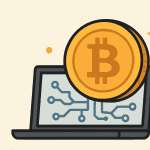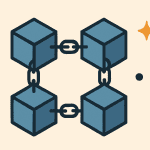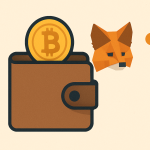If you’ve used cryptocurrency like Ethereum, you may have seen something called a gas fee. But what does it mean? Why do you have to pay it? And how can you reduce it?
This beginner-friendly article will explain gas fees in simple language. Let’s break it down step by step.
Contents
What Is a Gas Fee?
A gas fee is the cost you pay to use a blockchain network, like Ethereum. Every time you send crypto, swap tokens, or use a smart contract, the network needs to process your action. To do that, it uses computer power.
You pay a small fee for that power—this is the gas fee.
Simple Example:
Sending 1 ETH to a friend? You’ll pay a gas fee so the Ethereum network can complete the transaction.
Why Is It Called “Gas”?
Think of gas like fuel for your car. You need fuel to make your car move. In the same way, a blockchain needs gas to move your transaction forward.
Without gas, nothing happens.
Who Gets the Gas Fee?
Gas fees are paid to the people who help run the blockchain—called miners (in Proof of Work) or validators (in Proof of Stake). They confirm transactions and keep the network secure.
Gas fees reward them for their work.
What Affects the Gas Fee?
Gas fees can change depending on:
1. Network Activity
If many people are using the network at the same time, gas fees go up. This is called network congestion.
2. Transaction Type
Some actions need more computing power than others. For example:
-
Sending ETH = low gas
-
Swapping tokens = medium gas
-
Minting NFTs or using complex smart contracts = high gas
3. Blockchain You Use
Not all blockchains charge the same. Ethereum is known for high gas fees. Other networks like Polygon, Solana, and BNB Chain usually have lower fees.
How Are Gas Fees Calculated?
On Ethereum, gas fees are based on:
-
Gas limit – How much work your transaction needs
-
Gas price – How much you’re willing to pay per unit of work (measured in gwei, a small part of ETH)
Simple Breakdown:
Gas Fee = Gas Limit × Gas Price
If:
-
Gas Limit = 21,000 units (typical for sending ETH)
-
Gas Price = 50 gwei
Then: -
Total Fee = 21,000 × 50 = 1,050,000 gwei (or 0.00105 ETH)
Can I Lower Gas Fees?
Yes! Here are a few tips:
1. Use the Network During Off-Peak Hours
Gas fees are lower when fewer people are online. Try early mornings or weekends.
2. Use Layer 2 Solutions
Layer 2 networks like Arbitrum, Optimism, and zkSync offer cheaper and faster transactions built on top of Ethereum.
3. Try Cheaper Blockchains
Use networks with lower fees like Polygon, Avalanche, or BNB Smart Chain.
4. Set a Lower Gas Price (Advanced Users)
Some wallets let you choose a custom gas fee. Setting it too low may cause delays, so use with caution.
Why Are Gas Fees Sometimes High?
Gas fees are high when:
-
Many people are using the blockchain
-
There’s a big NFT drop or popular event
-
A token is trending and people are rushing to trade
High demand = higher prices. It’s like surge pricing for a taxi.
What Happens If I Don’t Pay Enough Gas?
Your transaction may fail or get stuck. In Ethereum, if the gas runs out, the transaction is canceled—but you still lose the gas fee.
That’s why it’s important to have enough ETH (or the correct token) in your wallet before making a transaction.
Final Thoughts
Gas fees are a normal part of using blockchains. They help pay for the power needed to keep the network running. While fees can sometimes be high, there are ways to reduce them and avoid surprises.
Remember:
-
Gas = fuel for your transaction
-
Fees vary based on demand and transaction type
-
You can choose cheaper times or networks
Now that you understand gas fees, you’re better prepared to use crypto with confidence.




